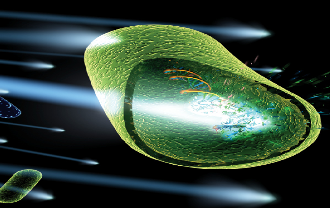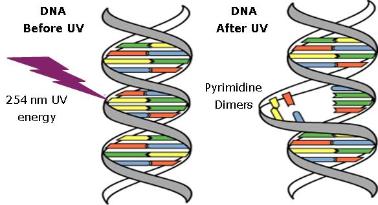- Phone: 800-492-1252
- Fax: 440-368-3569
- E-mail: info@spartanwatertreatment.com
Ultraviolet light disinfects by disrupting the DNA or RNA structures of microorganisms. The disruption prevents microorganisms from replicating, thereby rendering them inactive and unable to cause infection. The primary mechanism of inactivation by UV is the creation of Pyrimidine Dimers which are bonds formed between adjacent pairs of thymine or cytosine pyrimidines on the same DNA or RNA strand.


The 253.7 nm peak output level of low-pressure UV lamps is relevant for disinfection because it is very close to the 260- 265 nm range where DNA and RNA experience maximum UV absorption. Because the 253.7 nm wavelength is extremely effective for disinfection, ultraviolet lamps that are installed for disinfecting water typically use quartz envelopes and sleeves designed to “block” the 185 nm ultraviolet output and prevent the creation of ozone.
One of the primary benefits of UV for disinfection is that it does not contain nor create any residuals, or byproducts, such as occur with chemical methods of purification. In fact, UV is sometimes used to remove residuals, such as chlorine, peroxide, and ozone, that result from other purification processes.
Different species of microorganisms require varying levels of UV exposure, but nearly all can be effectively inactivated with a fluence level of 30 to 40mJ/cm². With fluence levels in this range, UV systems are able to achieve a 4-log reduction for most microorganisms. This is commonly referred to as a 99.99% reduction.
Ultraviolet disinfection of water is extremely effective when the water being treated is highly transmissive. With lower levels of transmissivity it may be necessary to filter prior to UV treatment or use additional UV lamps to ensure sufficient levels of treatment.
